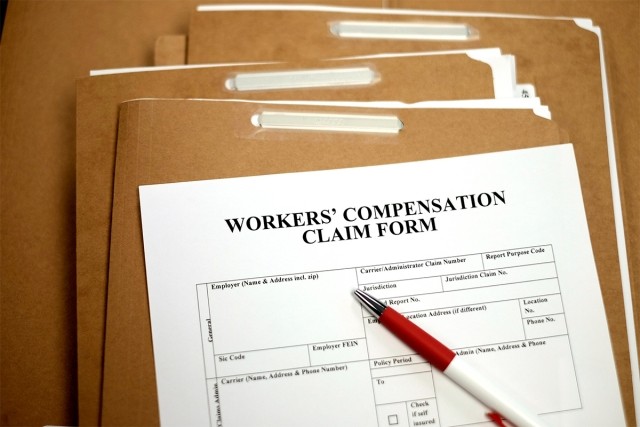Blog
AB 685: COVID-19 Potential Exposure Reporting and OSHA Citation Presumption
California Gov. Gavin Newsom recently signed into law two bills affecting California employers and insurance carriers. Assembly Bill (AB) 685, which will be in effect Jan. 1, 2021 through Jan 1, 2023, sets new requirements for employers to notify their employees and their unions about a potential COVID-19 exposure in the workplace. The other bill, Senate Bill (SB) 1159, relates more directly to the reporting of positive cases to workers' compensation insurance carriers and presumption of coverage. Detailed information on SB 1159 can be found on the Woodruff Sawyer Insights page.

AB 685: Reporting Potential Exposures to COVID-19
AB 685 contains a requirement for reporting potential exposures to multiple parties, including employees, employee representatives, and subcontractor employers. An important distinction between this bill and SB 1159 is that what must be reported under section 6409.6 of AB 685 is potential exposure to someone who has been deemed a qualifying individual, during their infectious period, not just a resulting positive case.
A "qualifying individual" means any person who has
- had a laboratory-confirmed case of COVID-19 as defined by the California State Department of Public Health (CDPH) or a positive COVID-19 diagnosis from a licensed healthcare provider.
- received a COVID-19-related order to isolate provided by a public health official.
- died due to COVID-19 in the determination of a county public health department or per inclusion in the COVID-19 statistics of a county.
The bill states that the infectious period is defined by the CDPH. CDPH defines the start of the infectious period as, "at a minimum, the 48 hours before the individual developed symptoms." CDPH also uses the 10 - 1 rule for ending isolation. The rule means that it has been at least 10 days since the onset of symptoms or a positive test, and it has been 24 hours since the individual has not had a fever (without the use of fever-reducing medications), and other symptoms have improved. Keep in mind that a healthcare provider may determine that the infection period for some individuals with more difficult symptomology is longer, so this period could be extended. Determining the infectious period may be more difficult in asymptomatic individuals and could possibly be determined by extending the time period back to the first known exposure. It may be necessary to obtain guidance from the CDPH or a healthcare provider to determine the most accurate infectious period.
Notice of Potential Exposure to Coronavirus
The first three entities (employees, subcontractor employers, and personal representatives) are to be notified when the employer receives notice that a potential exposure to a qualifying individual has occurred at the workplace. The text of AB 685 defines "notice of potential exposure" as any of the following:
- Notification to the employer, representative from a public health official, or licensed medical provider that an employee was exposed to a qualifying individual at the worksite.
- Notification to the employer or representative from an employee or their emergency contact that the employee is a qualifying individual.
- Notification through the testing protocol of the employer that the employee is a qualifying individual.
- Notification to an employer or representative from a subcontracted employer that a qualifying individual was on the employer's worksite receiving notification.
The basic premise is if a "qualifying individual" (generally someone diagnosed with, deceased secondary to, or isolated secondary to COVID 19) is on an employers worksite, and the employer receives notice of that fact, then employees who may have been exposed, subcontractors who may have had employees exposed, and personal representatives of employees are to be notified within one day. While this may seem similar to current OSHA requirements for certain documentation, keep in mind that these representatives do not have to request that information as they do under other regulations. The employer must send that information without being asked.
The information must be sent to personal representatives (not employees or subcontractors) and must contain all of the same information typically found on an OSHA 300 log. This requirement applies even for partially exempt (do not have to keep logs normally) employers.
The bill does put forward protection of personally identifiable information when reporting to other employees and subcontractors, so be aware the information going to the personal representatives is different than the information going to employees and subcontractor employers. When employees and subcontractor employers are notified, that information may not contain names or other PII. A discussion around sending PII (limited to what would be on an OSHA 300 log) to personal representatives—and protection measures to take with that data—should be discussed with your HR/employment counsel to ensure the methods are within legal parameters.
Disclosing COVID-19 Exposure to Employees
For the employer's own potentially exposed employees, AB 685 requires a disclosure of available benefits, workers' compensation-related as well as leave (both required and negotiated), and governmentally-required benefits related to COVID-19. Another piece of information that must be conveyed includes anti-retaliation and anti-discrimination protections related to reporting COVID-19 positive test results. The employer of subcontracted employees must extend this information to their own employees.
The bill also requires notification to ALL employees at that site, whether previously notified or not, of the site disinfecting schedule and the safety plan implemented. In this regard, the bill references the requirements of the CDC. An employee who is NOT potentially exposed needs to receive an update or restatement of disinfecting and safety plans related to COVID-19 prevention.
Therefore, this bill means that an employer will have to release different sets of information to provide notification to employees, their subcontractors, and the personal representatives of their own employees.
Written Records of Disclosures are Required
Lastly, under section 6409.6 of AB 685, the employer is also required to keep a written record of all notices provided to these parties for a period of at least three years. The bill does not state how this record-keeping is to be done but an employer could choose to utilize current investigation and action planning documentation from the IIPP or any additional tracking mechanisms built into a separate COVID-19 program to track this information.
Employers Must Notify the Health Department of Outbreaks
An area of 6409.6 that feels somewhat disconnected from the other pieces relates to outbreaks at worksites. If an outbreak occurs based on positive cases, not potential exposures, the local health department must be notified. An outbreak generally means three or more positive cases, as defined by the California Department of Public Health (CDPH), within two weeks from different households, at a specific worksite. Of note is that this bill defines "outbreak" differently than SB 1159. Its definition contains specific time frames (see the link to the CDPH document above) and has different meanings for congregant living and healthcare settings. We recommend a full read of the CDPH document and definitions.
Is this outbreak reporting really different than what was already required? Yes, since AB 685 now puts reporting to the health department during an "outbreak" legally in the hands of the employer. The bill states that there are possible legal ramifications for failure to report, and there are limited exceptions for some healthcare facilities specific job tasks within the bill. Having a pre-arranged contact within your local health department can help make this process easier should an outbreak occur on your site.
Once the health department has notice of an outbreak and conveys that to the CDPH, the bill requires the CDPH to post the information on its website in a way that allows the public to track outbreak numbers by industry.
OSHA Enforcement Abilities
In a bit of a different vein, the bill's sections 6325 and 6432 also provide expedited Occupational Safety and Health Administration (OSHA) enforcement abilities. OSHA can more easily and more quickly shut down a worksite or portions of a worksite under this bill. Similarly, serious citations are now fast-tracked under a rebuttable presumption provision. Combine this ability with future plans for the State of California to enact an emergency COVID-19 regulation that is similar to the State of Virginia's recent legislation, and the bill may have the potential to change California OSHA enforcement methods and the timeline and methods available to employers to stay open and or rebut any citations issued.
Because of this bill's breadth, we strongly encourage you to partner with your employment counsel and internal counsel to do a full read of AB 685 and its implications for your organization. As always, Woodruff Sawyer remains available and committed to helping address any questions you may have. Please contact your Woodruff Sawyer account executive or contact the author directly at sglazier@woodruffsawyer.com.
Author
Table of Contents














